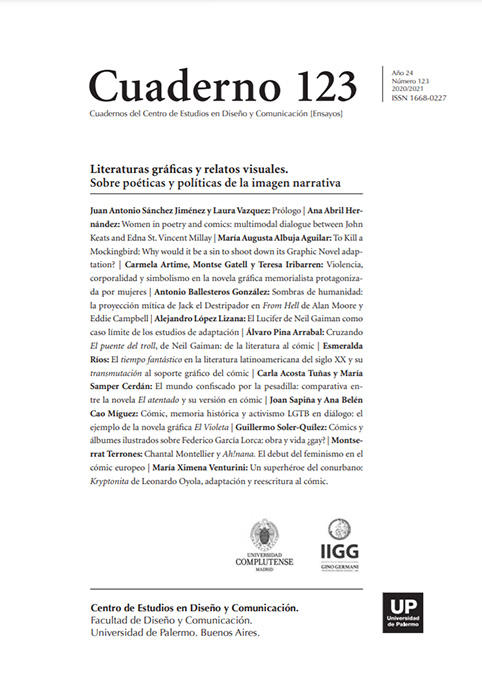To Kill a Mockingbird: Why would it be a sin to shoot down its Graphic Novel adaptation?
Resumen
En el 2018, Matar a un Ruiseñor (1960), la novela de Harper Lee (1926-2016) ganadora del Pulitzer, fue adaptada a novela gráfica por el artista inglés Fred Fordham. Heredero de la tradición franco-belga de la bande-dessinée, nos muestra paneles llenos de ilustraciones delicadas pintadas en colores pasteles que avanzan a ritmo acertado, enfocándose en la perspectiva de los personajes más jóvenes. El artista conserva diálogos importantes de la novela original, ofreciendo además su propia visión.
Cualquier adaptación de un clásico representa un desafío, especialmente debido a las posibles comparaciones con el original. Al mismo tiempo, una revisión puede aportar luz y novedad a historias que merecen una relectura. Lejos de pretender comparar la novela gráfica con la original, el presente análisis gira entorno a esta nueva versión con el fin de comentar sobre algunas cuestiones elementales. ¿Cuáles son los aspectos formales, visuales y textuales, que la novela gráfica presenta de manera original? ¿Cuáles son las experiencias nuevas que ofrece al lector? ¿Cuál es el enfoque innovador que el artista pretende aportar? ¿Por qué es importante que esta historia resurja en estos tiempos de reemergencia de gobiernos nacionalistas y movimientos y políticas xenofóbicas y antifeministas? En pocas palabras, ¿cuál es el mérito de la adaptación en este milenio?
Citas
Andrew Nurnberg Associates International Ltd. (n.d.). Fred Fordham Archives. Retrieved March 11, 2020, from https://andrewnurnberg.com/book-author/fordham-fred/
Brenner, R. (2011). Comics and Graphic Novels. In S. Wolf, K. Coats, P. Enciso, & C. Jenkins (Eds.), Handbook on Research on Children’s and Young Adult Literature (pp. 256-268). New York: Routledge.
Chute, H. (2008). Comics as Literature? Reading Graphic Narrative. PMLA, 123(2), 452–465. https://doi.org/10.2307/25501865
Fordham, F. (2018). To Kill a Mockingbird : A Graphic Novel. New York: Harper Collins. Harper Imprint (2018, May 23). To Kill a Mockingbird: A Graphic Novel [Video]. Youtube. https://www.youtube.com/watch?v=1VtLb7EiIoc&t=6s
Hatfield, C. (2011). Graphic Novel. In P. Nel & L. Paul (Eds.), Keywords for Children’s Literature (pp. 100-105). New York: NYU Press.
Hutcheon, L. (2006). A Theory of Adaptation. New York: Routledge.
Kukkonen, K. (2013). Studying Comics and Graphic Novels. New Jersey: John Wiley & Sons Inc.
Lee, H (1960). To Kill a Mockingbird (Vintage, 3rd ed.). London: Penguin Random House.
Mulligan, R. (Director). (1962). To Kill a Mockingbird [Film]. Universal Pictures.
Pointner, F. E., & Boschenhoff, S. E. (2010). Classics Emulated: Comic Adaptations of Literary Texts. CEA Critic, 72(3), 86–106. https://doi.org/10.2307/44378426
Los autores/as que publiquen en esta revista ceden los derechos de autor y de publicación a "Cuadernos del Centro de Estudios de Diseño y Comunicación", Aceptando el registro de su trabajo bajo una licencia de atribución de Creative Commons, que permite a terceros utilizar lo publicado siempre que de el crédito pertinente a los autores y a esta revista.


